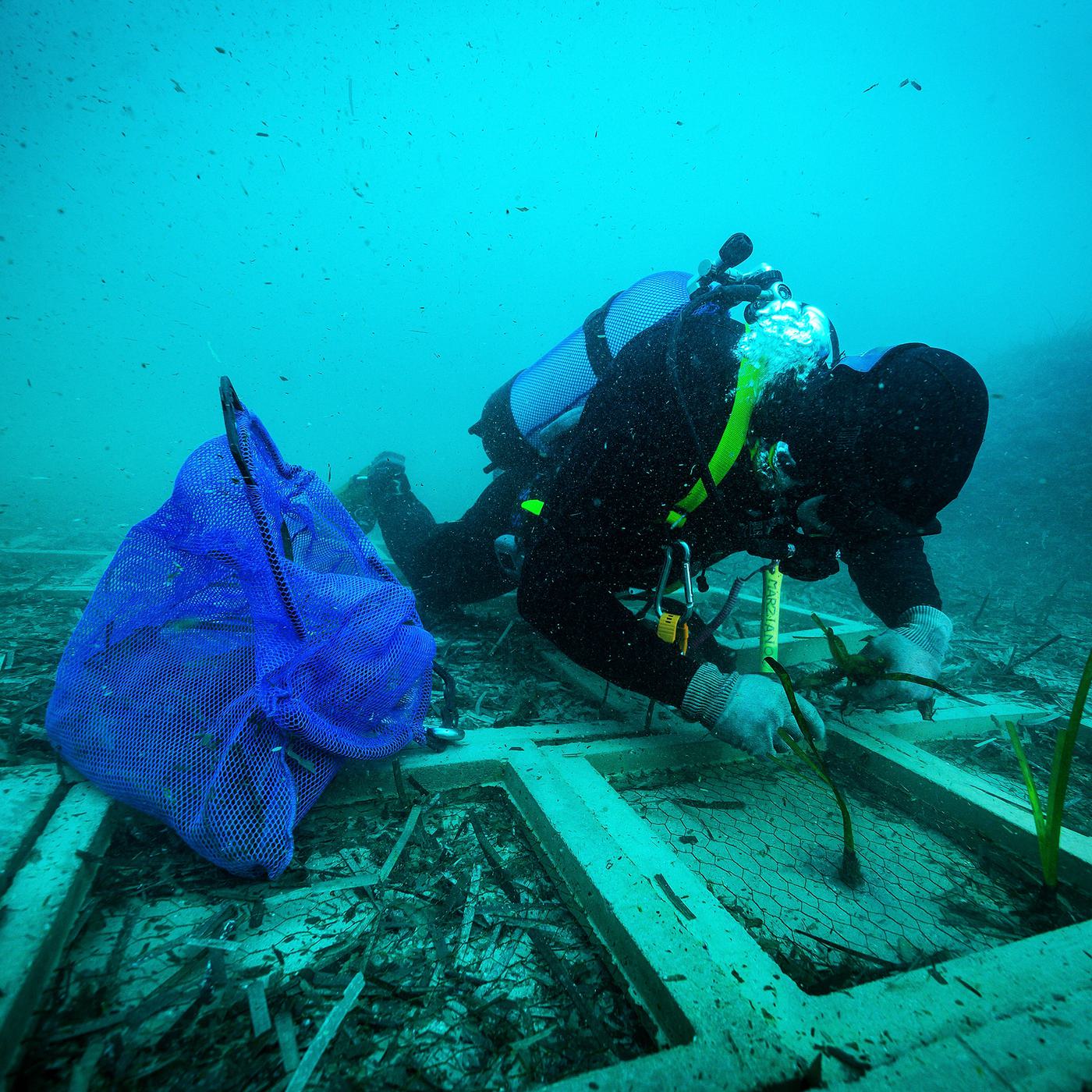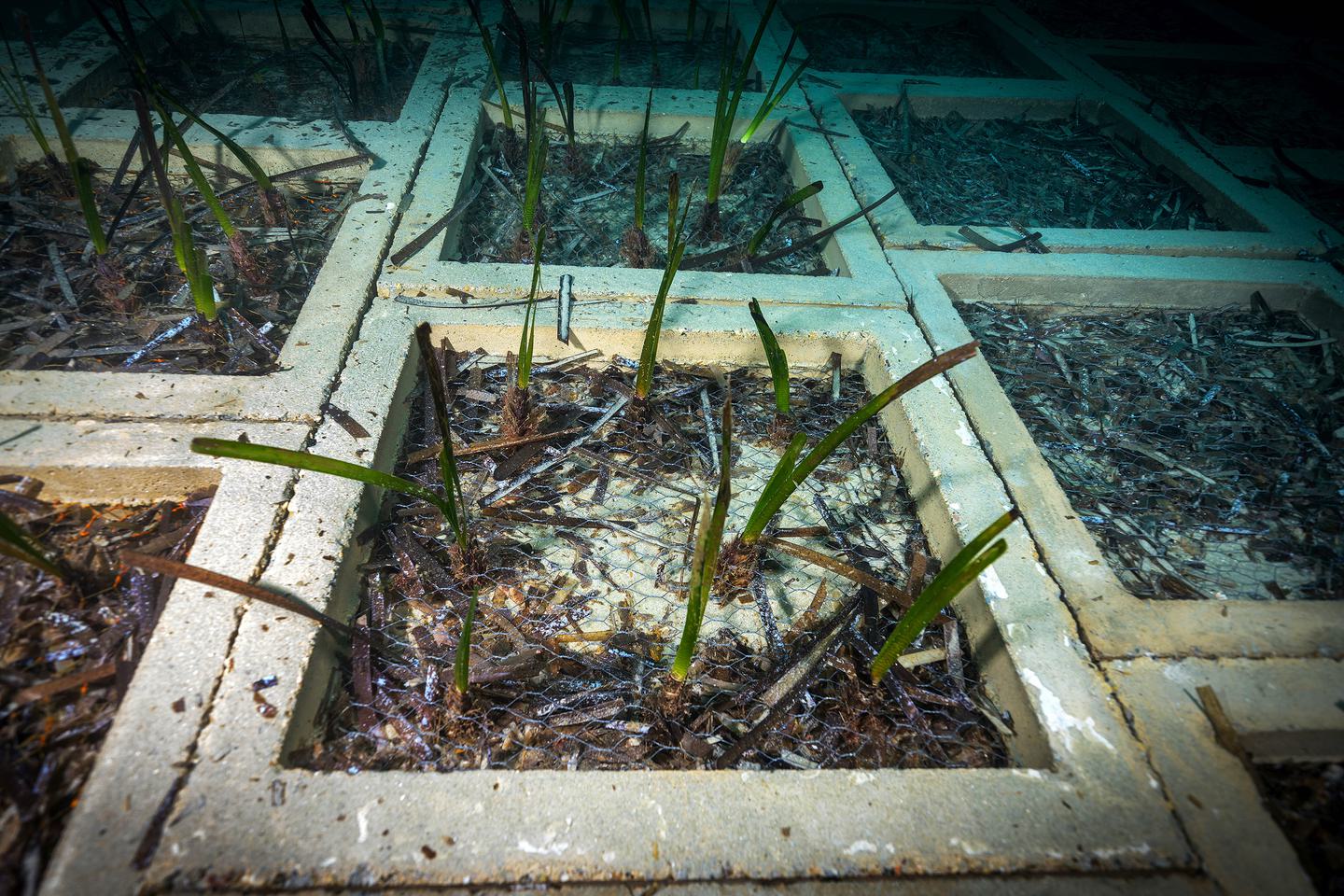Yet balancing the need to construct strategic electricity infrastructure to secure Italy's present and future with the importance of protecting the environment and biodiversity is no mean feat - it is a complex task that often runs into bureaucratic obstacles that not only cause delays but even compromise the success of certain initiatives. Fortunately however, we do have some positive examples, such as the project developed by Terna, Italy's national electricity grid operator, to construct a new submarine power line between the island of Elba and Piombino. As part of the project, Terna conducted a major environmental mitigation activity to transplant around 53,000 rhizome fragments of Posidonia oceanica to a site measuring over 1,650 square metres in the Gulf of Follonica between Livorno and Grosseto, and the approach is currently being considered for use in other projects like the Sa.Co.I.3 or the Tyrrhenian Link.

Protecting Posidonia oceanica is a key step towards ensuring the peaceful coexistence of marine life and submarine infrastructure
When constructing civil engineering projects, including those to transport electricity under the sea, the importance of protecting the environment, biodiversity and natural ecosystems cannot be ignored.

What is Posidonia oceanica and how does it benefit the coast? «Posidonia oceanica is an aquatic plant typical of the sea floor of the Mediterranean, where it is very widespread» explains Francesca Massara, engineer and Head of Permitting Management, Easement & Marine Environment at Terna. «It is able to form meadows under the sea that play a key ecological function in preventing coastal erosion, and also provide shelter and nourishment to the many animal and plant organisms that inhabit them. The plant is considered an extremely important ecological resource, and in fact it has been named as a priority habitat to be protected under Europe's environmental directives due to its vulnerability, especially to anthropic factors such as anchoring and trawling».
What happens if Posidonia oceanica is damaged? Damage to Posidonia can have severe repercussions for the marine ecosystem, triggering erosion processes that require human intervention to stem. Posidonia meadows take many years, often decades, to recover to their original condition after being disturbed. To make a comparison, the recovery times are similar to those needed to restore an oak forest that has burnt down.

But what does Terna have to do with a Mediterranean aquatic plant? As Massara explains «to ensure that the submarine cables of Italy’s electricity grid are well-protected and safe, they have to be secured to the sea floor itself. Because of the widespread distribution of Posidonia oceanica along our coasts, this plant and its protection are one of the key drivers when identifying the landing sites for submarine power lines on the mainland, and more generally in the infrastructure design and implementation process. In fact, the company has made the protection of these ecosystems a central pillar of its focus and strategies for several years, something that has become all the more topical in light of the new National Grid Development Plan which features a strong push for submarine infrastructure. In this regard, Terna is committed to adopting innovative approaches and solutions to minimise the impact of its infrastructure and guarantee the sustainable coexistence of electricity cables and Posidonia oceanica».
Terna’s commitment to protecting Posidonia. The work to protect the marine ecosystem starts before the initial development phases of a project have even begun. «Terna invests significant financial resources in sea floor surveys to gather the data needed to identify routes able to reconcile the correct technical criteria, in terms of design and installation, with the protection of the existing habitats. The goal is to minimise the ecological impact of our infrastructure in line with our commitment to guarantee high standards of environmental sustainability» explains Massara, emphasising that «where it is not possible to avoid Posidonia oceanica meadows for technical reasons, efforts are made to lay the cables in areas where the plant is sparser or less extensive, and appropriate environmental mitigation and/or compensation actions are planned».
The complex task requires extensive and detailed planning that can sometimes take several years, and is developed by Terna in collaboration with the Ministry of the Environment and Energy Security and various bodies and research centres, including Ispra. The studies inform the mitigation and compensation actions to be adopted, such as the development of new technologies for laying cable on seagrass meadows, to protect the infrastructure and minimise the environmental impact.
All of the development activities are subject to strict environmental monitoring which continues for several years after the cable is laid. This ongoing process is aimed at assessing the habitat's ecological evolution and ensuring that the actions taken are also effective in the medium and long term. In fact, the meadow is characterised by low resilience and slow development, growing just a few centimetres a year.
«To ensure that the submarine cables of Italy’s electricity grid are well-protected and safe, they have to be secured to the sea floor itself. Because of the widespread distribution of Posidonia oceanica along our coasts, this plant and its protection are one of the key drivers when identifying the landing sites for submarine power lines on the mainland, and more generally in the infrastructure design and implementation process».
Transplanting Posidonia for the Elba submarine power line. What happens when mitigation actions aren't enough? «Then we move onto environmental compensation actions. The most typical of these is transplantation, which is carried out before the cable is laid. There are different approaches that vary according to site-specific parameters, such as depth, water condition and temperature. The most appropriate procedure is evaluated jointly with the competent scientific bodies» explains Francesca Massara.
This was exactly what Terna did for the new electricity bridge between the island of Elba and Piombino (Livorno), which entered service a few months ago: the Elba-Continent power line consists of a 34 km submarine cable, 3 km of which affects a meadow of Posidonia oceanica around the landing site at Piombino. «The possibility of implementing this transplantation of Posidonia oceanica represented a great achievement for Terna and required over a decade of work. It was the culmination of a group effort carried out by our team in collaboration with the authorising bodies», notes Massara with satisfaction.
To protect the local biodiversity, before laying the submarine cable Terna transplanted around 53,000 rhizome fragments to a site measuring over 1,650 square metres in the Gulf of Follonica, an inlet of the Tyrrhenian Sea that extends from the southernmost point of the province of Livorno to the northern part of the province of Grosseto. In terms of the technical characteristics of the project, «the rhizome fragments were removed and brought to dry land. Once the plants had been cleaned and processed one by one, they were replanted on anchoring structures - consisting of actual frames with wire mesh - and then repositioned by underwater technical operators at the target site. It is an extremely complex task, which in the case of the Elba project took two months» emphasises the Terna expert.
This record-breaking time was achieved partly thanks to the ideal weather conditions. The works were conducted by the grid operator in collaboration with ECON, which conducted the transplantation under the supervision of the Consorzio Nazionale Interuniversitario per le Scienze del Mare (CoNISMa). However, Massara is keen to highlight all of the preliminary work conducted prior to this phase: «Before the divers - who are highly qualified scientific operators - entered the water to remove the plants, analyses were carried out to identify the most appropriate sites for the transplantation, including bathy-morphological surveys, current measurements, and chemical and physical analyses of the water column and the sediments». The results, together with the executive transplantation plan, are then submitted to the relevant ministry, and it is only after receiving the green light that the removal and transplantation work can begin.

One critical step in the environmental compensation work is the installation of buoys which protect the newly replanted plants by marking their position, with the main goal of preventing any anchoring or trawling that could damage the site.
The transplantation works involved considerable planning as well as financial investment, but are a necessary step in safeguarding the marine environment and biodiversity, which represents one of the underlying principles of Terna’s Development Plan. Environmental mitigation and compensation actions have already been planned and scheduled for other strategic works such as Sa.Co.I.3 and, Tyrrhenian Link with a view to supporting the energy transition which, as well as representing a driver of Italy's economic growth, is essential to meeting international sustainability goals. In fact, for the Tyrrhenian Link Terna is working with MASE to pilot the first project in Europe to protect Cymodocea, another marine plant of enormous ecological importance.
